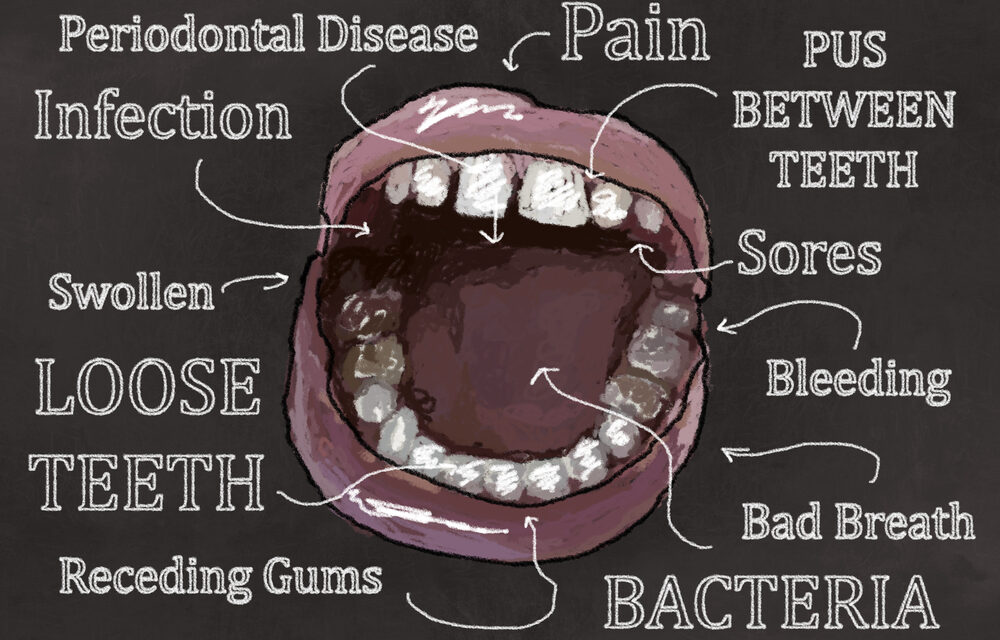Periodontal disease is an infection of the gums and bone surrounding and supporting the teeth. Initially, gums can become swollen, red, and bleed. Eventually, the gums can pull away from the tooth, bone can be lost, and teeth may loosen or even fall out. Periodontal disease is mostly seen in adults, and is one of the biggest threats to dental health.
Periodontal disease is caused when bacteria in the mouth infects tissue surrounding the tooth and causing inflammation. When bacteria remain on the teeth long enough, they form a film called plaque, which hardens to tartar. This build-up can spread below the gum line, making the teeth harder to clean, resulting in the need for a professional to remove the tartar and stop the progress of the periodontal disease.
Warning signs of periodontal disease include bad breath or a bad taste that won’t go away; red, tender, swollen or bleeding gums; painful chewing; loose teeth, sensitive teeth, gums that pull away from your teeth; changes in how your teeth fit together when you bite; and changes in the fit of partial dentures.
Risk factors for periodontal disease include smoking, diabetes, poor oral hygiene, stress, heredity, crooked teeth, underlying immuno-deficiencies, dry mouth due to medications, bridges that fit improperly, and female hormone changes.
Mild periodontal disease (gingivitis) can be controlled and treated with good oral hygiene and regular professional cleaning. More severe forms may require more extensive treatment, such as deep cleaning of the tooth root surfaces below the gums, oral medications, and possibly corrective surgery. Brushing and flossing daily to remove the bacteria that cause gum disease is important, as is seeing a dentist for yearly checkups, or if you have signs of gum disease.












